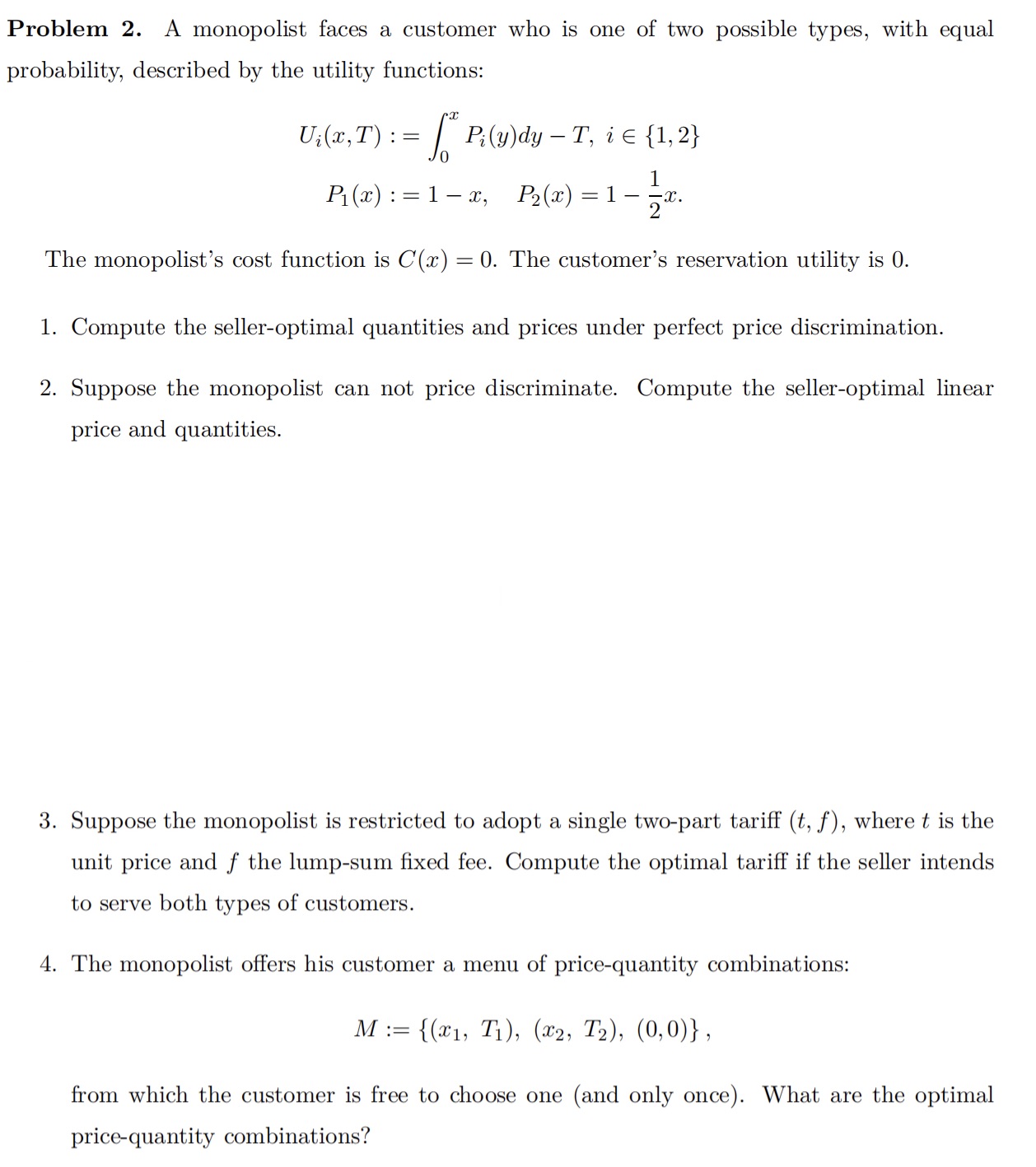Answered step by step
Verified Expert Solution
Question
1 Approved Answer
Problem 2. A monopolist faces a customer who is one of two possible types, with equal probability, described by the utility functions: U(x,T) :

Problem 2. A monopolist faces a customer who is one of two possible types, with equal probability, described by the utility functions: U(x,T) : = f* P;(y)dy T, i {1,2} 1 P(x):= 1- x, P(x) = 1 - The monopolist's cost function is C(x) = 0. The customer's reservation utility is 0. 1. Compute the seller-optimal quantities and prices under perfect price discrimination. 2. Suppose the monopolist can not price discriminate. Compute the seller-optimal linear price and quantities. 3. Suppose the monopolist is restricted to adopt a single two-part tariff (t, f), where t is the unit price and f the lump-sum fixed fee. Compute the optimal tariff if the seller intends to serve both types of customers. 4. The monopolist offers his customer a menu of price-quantity combinations: M:= {(x1, T1), (x2, T), (0,0)}, from which the customer is free to choose one (and only once). What are the optimal price-quantity combinations?
Step by Step Solution
★★★★★
3.49 Rating (149 Votes )
There are 3 Steps involved in it
Step: 1
1 Under perfect price discrimination the monopolist can charge each customer their willingness to pay maximizing their profits To find the optimal qua...
Get Instant Access to Expert-Tailored Solutions
See step-by-step solutions with expert insights and AI powered tools for academic success
Step: 2

Step: 3

Ace Your Homework with AI
Get the answers you need in no time with our AI-driven, step-by-step assistance
Get Started


